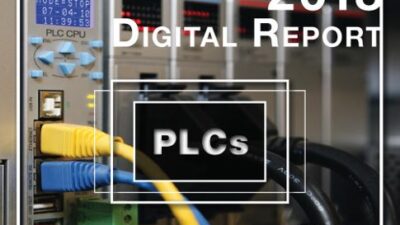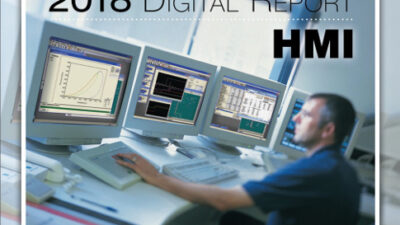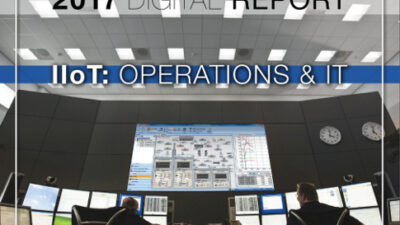By Sam Boytor, Fox Controls Inc.
To access a free white paper from Siemens detailing the evolution and business advantages of machine safety, click here .
In the past century, U.S. manufacturers have made great strides in improving worker safety on the plant floor. Since the 1920s, three generations of machine safety have been used in within U.S. manufacturing facilities. While early manufacturers were required to apply techniques using standard components, manufacturers today are reaping the benefits of proven and cost-effective safety networks and controllers.
More specifically, manufacturers now have the option of replacing hardwired safety systems with safety PLCs and safety networks. By switching from hardwired safety products to internationally certified, automated safety solutions, manufacturers are enjoying lower costs, heightened flexibility, and reduced chances for operator error.
As they saying goes: “Those who know the past, control the future.” Understanding the evolution of machine safety provides a powerful knowledge base from which to comprehend the benefits of new technology applications. With that in mind, let’s take a look at how we got to where we are today with machine safety.
First generation fills niche The safety evolution began approximately 80 years ago, when machine safety controls were not yet commercially available and manufacturers experienced increasing accidents and injuries on the shop floor. Manufacturers responded by creating the original ANSI B11 machine tool consensus standard for machine safety. This first generation of safety in the U.S. was born by applying basic wiring techniques using standard components, including limit switches, relays, and pushbuttons. These devices were configured to provide redundancy and some error checking to meet early industrial standards for machine guarding.
Until the 1970s, these hardwired, standard industrial components were the mainstay of machine safety in the U.S. and were found in high-risk industries, including elevators and mechanical power presses. Even with these safeguards in place, operators were at constant risk of injury or death because of the shortcomings of these primitive techniques.
Second generation enhances protection The second generation of machine safety emerged in Europe in the ’70s and, until recently, the U.S. has been playing catch up.
This generation of machine safeguarding is still widely used today and employs hardwired devices specifically designed for safety applications, including safety switches, door interlocks, light curtains, and safety mats. Field interface modules or safety relays as identified in ANSI B11.19—“Performance Criteria for Safeguarding”—were developed specifically to monitor these safety devices.
One of the notable milestones in the second generation of machine safety came about when the Europeans created a certification requirement for machine safety. This CE certification required manufacturers to perform a risk assessment of their operations (where operators were at risk in close proximity to a machine).
The risk assessment was to be followed up by a declaration of conformity identifying how the company adhered to EN 1050, a European machine standard. Because of this assessment, European manufacturers began to understand failure modes and develop safety products based on that information.
Third generation brings benefits The third generation of machine safety builds on the second. Beginning in 2002, technological advancements as well as changes to industry consensus standards have lead to this third generation of safeguarding solutions in the U.S.
The third generation of safeguarding solutions employs safety PLCs and safety networks, including AS-Interface. ANSI B11.TR4 identifies the different types of safety controllers in the market place today. It also stresses the importance of conducting a risk assessment like those prescribed in ANSI B11.TR4—“Risk assessment and risk reduction: A guide to estimate, evaluate, and reduce risks associated with machine tools.”
This new generation of safeguarding is based on a software platform rat
her than traditional hardwired solutions, thereby reducing project costs, enhancing flexibility, improving safety, and reducing chances for operator error.
Cost savings It is difficult to justify using relay logic today rather than safety PLCs, because safety PLCs are so cost effective. Large users will embrace safety PLC technology to make the jump from a standard hardwired system. As the installed cost of PLCs continues to decrease, the number of companies employing them for safety will continue to grow.
To illustrate my point, the charts below contain actual installed costs of a few of our recent installations. As you can see, the use of third generation safety circuits can save companies nearly 25% on the electrical installation alone.
Comparison 1Safeguarding a roofing line—Hardwired (ANSI TR6)
Comparison 2Safeguarding a transfer line Hardwired (ANSI TR6)
Material and Services
% of total project cost/$ amount
Material and Services
% of total project cost/$ amount
Electrical Devices
8% or $20,000
Electrical Devices
8% or $136,000
Electrical Interfaces
16% or $40,000
Electrical Interfaces
16% or $272,000
Electrical Installation
24% or $60,000
Electrical Installation
24% or $408,000
Electrical material
3% or $7,500
Electrical material
3% or $51,000
Total Cost:
$250,000
Total Cost:
$1,700,000
Safeguarding a roofing line Safety Network (ANSI TR4)
Safeguarding a transfer line Safety Network (ANSI TR4)
Material and Services
% of total project cost/$ amount
Material and Services
% of total project cost/$ amount
Electrical Devices
8.8% or $22,000
Electrical Devices
8.8% or $149,600
Electrical Interfaces
18% or $45,000
Electrical Interfaces
18% or $306,000
Electrical Installation
6% or $15,000
Electrical Installation
6% or $102,000
Electrical material
1% or $2,500
Electrical material
1% or $17,000
Total Cost:
$207,000
Total Cost:
$1,411,000
Total Saving of 17% or $43,000
Total Saving of 17% or $289,000
Heightened flexibility, fewer operator errors The benefits of software-based, networked, safety solutions over hardwired systems do not end with project cost savings. Safety PLCs are easily monitored and changed compared to the hard-wired approach of the past. Troubleshooting the hardwired “handshaking” of contactors, door switches, light curtains, and safety mats can take hours, or even days, at machine start up. Logic changes may be made to the safety function by quickly modifying the appropriate preprogrammed parameter. As a result, the entire system is more efficient, flexible, and reduces wiring headaches.
In addition, since the parameters are preprogrammed into the safety PLC, the chances for operator error are also reduced. Safety PLCs are not like regular PLCs where it is possible to incorrectly program a safety parameter. There is no operator interpretation required with the safety PLC. Everything, including the software, is certified. Operators are not required to create an e-stop circuit. Now, they simply select an available “safety certified” e-stop circuit provided by the automation supplier.
From every standpoint—cost effectiveness, flexibility, and reduced chances for operator error—the benefits of a software-based safety solution far outweigh hardwired options. As more and more companies embrace third generation safety technologies, the cost of the systems will continue to go down while the combined knowledge base will rise. The promise of economical, enhanced safety in the U.S. is clearly within our reach.
To access a free white paper from Siemens detailing the evolution and business advantages of machine safety, click here .


